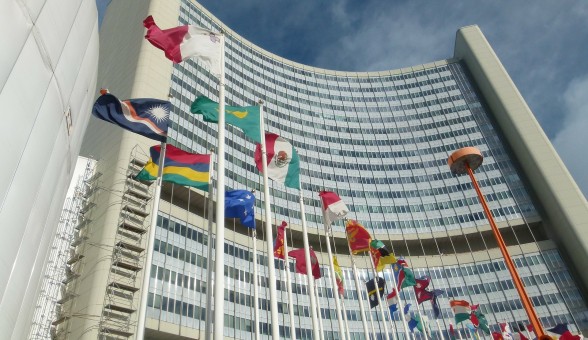
How Kenyon International Alumni Navigate the Post-Grad Job Market

By Charlie Woolsey ‘19
Kenyon international students face important decisions and unique challenges different from those of their classmates as they prepare to depart from the Hill. Those who look to build their careers in the US must contend with applying for a temporary work visas through Optional Practical Training (OPT), and eventually the H-1B high-skilled worker visa. While the visa process is challenging, many Kenyon international alumni have successfully built careers for themselves in the US thanks to hard work, extensive networking, and help from Kenyon administrators.
International students arrive at Kenyon on an F-1 visa, which is permission to study in the United States, with limited permission to work in ways that are relative to one’s course of study. For undergraduate off-campus internships over the summer or during the school year students usually apply to Curricular Practical Training (CPT) which operates under a strict 12-month work allotment and requires that the work be connected to the student’s major. As international students approach graduation, they apply for Optional Practical Training (OPT) if they intend to stay in the US. OPT is a twelve-month work authorization typically beginning June or July of the students’ graduation year, with the option of a two year extension for STEM majors.
Senior international students can apply for OPT four months prior to graduation and are required to begin their job within 60 day after they walk across the stage. Thankfully, a student doesn’t need to secure a job before applying for OPT, as it can take up to 90 days to process an application. Given this 12-month permission to work in the US post graduation, some international seniors look for fellowships or internships with 1-year commitments, while others aim to land in a company and/or industry more likely to sponsor their H-1B visa application at the conclusion of their OPT window.
For this latter group, this often means spending their first six months learning a new job while also continuing to search for employers who will sponsor them for a coveted three-year H-1B work visa once their OPT expires. If an international alum does secure a position with an employer willing to sponsor their visa application, candidates then enter the US Customs and Immigration Services visa lottery system, in which ⅓ of all applicants are drawn in March of every year. Given this uncertainty, young international alumni are many times also applying to graduate school as plan b, which if they enroll in, will offer them another 12 months of CPT and OPT.
Given the OPT and H-1B processes, the months leading up to and following graduation involve extensive job and grad school applications. It can also mean a good deal of disappointment. Ashan Rodriguez ‘13 remembers well the frustration of rejection during this period. “I went to a couple of [job] interviews where they said ‘Sorry our company isn’t looking for people who need sponsorship and we don’t do that.’ Those were just awful days.”
Ashan, who is from Sri Lanka, experienced this rejection five or six times in the first round of interviews, and even a few times in the second or third round of interviews. Ashan eventually landed a job at ICF International, a consultancy he had heard was willing to sponsor H-1B visa applications. (Companies with a history of sponsoring H-1B visas can be found online on sites such as myvisajobs.com.) When Ashan’s name did not get pulled from the visa lottery, he decided to apply for a position at the International Monetary Fund (IMF) in Washington D.C., which can hire international candidates without H-1B visas since it is an approved “international organization” as defined by the International Organizations Immunities Act approved in 1945. (For a list of these organizations, click here and go to section c.)
Through applying for jobs and visas, international students and alumni work through many obstacles by utilizing resources at Kenyon's Center for Global Engagement (CGE), Career Development Office (CDO), as well as through faculty and alumni networks.
Kenyon international alumnus Sam Clougher ‘17, relied heavily on guidance from the CGE. “It’s thanks to Lisa [Swaim], Marne [Ausec], and the rest of the CGE that I’m still here in the US. I’ve sent them so many emails saying ‘thank you so much, you saved me again,’” Sam says.
To Sam, the Kenyon Career Network is also especially helpful. “My biggest leads on jobs all came through Kenyon alums,” he said. Sam grew up in Ireland, and he now works as the Director of Equity and Inclusion at Trinity-Pawling School in New York, a position he heard about through connections with Kenyon alumni.
Employers must allocate extra time and money for candidates seeking an H-1B visa, so networking and utilizing connections is all the more important. “Alums are your best friend[s], international alums even more so. It’s such a difficult thing to put your foot in the door, but it cannot hurt you to reach out. Even if they can’t fully understand your situation, they [care],” Sam explained.
Indeed, the Kenyon Career Network is a fantastic tool to find and contact Kenyon international alumni. Through the network’s digital communities, students can join discussion groups based on their career interests or networking needs. The International Alumni and Student Community is especially helpful for international students to network with international alumni, discuss the visa process, or discover potential opportunities.
International students can face some daunting challenges in the transition into the American workforce, but success stories do exist and knowing your resources is an important place to start.